This is the second public version of ICU64. You can now experience the hacker’s view of the Commodore 64 with real-time view and edit of the C64 internals.
Note:
In this version ICU64 operates as a common debugger over the x64 process. This approach reduces the features that can be supported, in comparison to the Frodo Redpill version. But since it is slightly newer, it has some more functionality and some bugs are fixed. The notable addition is a simple ‘memory scanner’.
Requirements:
- A fast PC with Windows XP and .NET Framework 2.0
- The WinVICE 2.1 Emulator.
source: icu64.blogspot.com
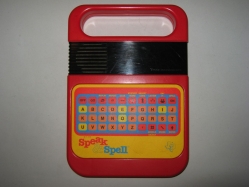
Autopsy:
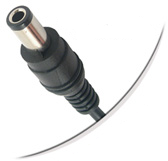
- Powersupply 6 volt DC v1.2A with positive tip polarity.
from Wikipedia:
The Speak & Spell line is a series of electronic handheld educational toys created by Texas Instruments that consist of a speech synthesizer, a keyboard, and a receptor slot to receive one of a collection of ROM game library modules (collectively covered under US patent 3934233 ).
The first Speak & Spell was introduced at the summer Consumer Electronics Show in June 1978, making it one of the earliest handheld electronic devices with a visual display to use interchangeable game cartridges.
The Speak & Spell was created by a small team of engineers led by Paul Breedlove, himself an engineer, with Texas Instruments (TI) during the late 1970s. Development began in 1976 with an initial budget of $25,000, as an outgrowth of TI’s research into speech synthesis.
The completed proof version of the first console utilized TI’s trademarked Solid State Speech technology to store full words in a solid state format similar to the manner in which calculators of the time stored numbers. Additionally purchased cartridges (called expansion modules) could be inserted behind the battery receptacle to provide new solid state libraries and new games.
This represented the first time an educational toy utilized speech that was not recorded on tape or phonograph record (as with Mattel’s See ‘n Say line or the earlier Chatty Cathy dolls).
source: wikipedia speaknspell.co.uk
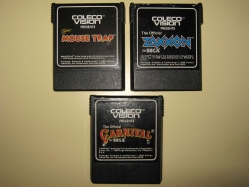
Autopsy:
Cartridges list:
- Mouse Trap by Exidy.
- Zaxxon by Sega.
- Carnival by Sega.
- Lady Bug by Universal.
- Donkey Kong by Nintendo.
click here for the CBS Coleco Vision category.
 from Homepage:
from Homepage:
The parts for the first EasyFlash cartridges have been shipped by Nils from his shop for8bits.
EasyFlash is a cartridge for the C64 expansion port. In contrast to traditional cartridges, this one can be programmed directly from the C64.
source: easyflash homepage
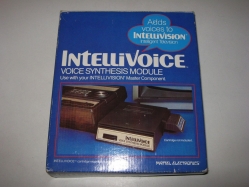
Autopsy:
from Wikpedia:
The Intellivoice Voice Synthesis Module was an adapter for the Intellivision, Mattel’s home gaming console, that utilized a voice synthesizer to generate audible speech.
The Intellivoice was a large, brown cartridge that plugged into the Intellivision’s side-mounted cartridge slot; games specifically designed for the device could then be inserted into a slot provided on the right-hand side of the module.
An International version of the Intellivoice was planned, but never released. The Intellivoice was discontinued in 1983 due to poor sales, with only five titles released with support for the device.
source: wikipedia
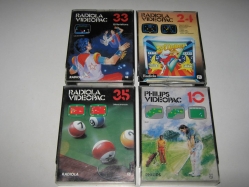
Cartridges list:
- Radiola Videopac #35 – Billiard American.
- Radiola Videopac #33 – Les Acrobates.
- Radiola Videopac #24 – Flipper Game.
- Philips Videopac #10 – Golf.
click here for the Philips Videopac G7000 category.
 C64-Archiv descriptions:
C64-Archiv descriptions:
- Scans and stores your C64 – (games) – collection with only a few clicks.
- Easily manages your C64-programs by creating your own categories.
- Starts the C64-programs in different emulators.
- Delivers instructions for the emulators VICE and CCS64.
- Stores the C64-programs from files with the extensions .d64, .d71, .p00, .prg and .t64.
- Stores files by name with the extensions: .tap, .vsf (VICE-snapshot-file) and .c64 (CCS-session-file)
- Stores the C64-programs in files with the extensions: .zip, .7z and .cab.
- Supports multi-language.
Version 2.4 – What’s new?
- NEW: Improved profils for VICE 2.1.
- NEW: Added files can be selected through the filter “New files”
- NEW: Improved performance scanning a folder.
- NEW: Improved performance working with zip-files.
- BUG fixed: Whole filename wasn’t displayed sometimes.
- BUG fixed: Files in the temp-folder were deleted in the recycle bin.
source: Mikes Pages
 Netfield previously known as Tulip went bankrupt on September 3rd 2009. Netfield / Tulip was the holder of the name Commodore.
Netfield previously known as Tulip went bankrupt on September 3rd 2009. Netfield / Tulip was the holder of the name Commodore.
Tulip bought the remains of Commodore from Escom in 1997 and was involved in the C64-DTV project.
source: commodore-gg.hobby.nl tulip.com
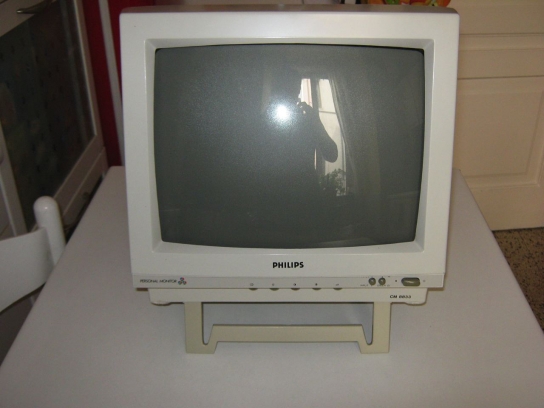
Autopsy:
The Philips CM8833 has an RGB connector which can accept both analogue and digital RGB signal and a RCA connector for Composite signal.
Download: Philips CM8833 Service Manual (2379)
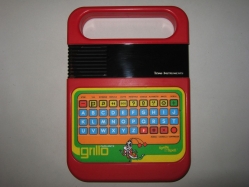
Autopsy:

- Powersupply 6 volt DC v1.2A with positive tip polarity.
from Wikipedia:
The Speak & Spell line is a series of electronic handheld educational toys created by Texas Instruments that consist of a speech synthesizer, a keyboard, and a receptor slot to receive one of a collection of ROM game library modules (collectively covered under US patent 3934233 ).
The first Speak & Spell was introduced at the summer Consumer Electronics Show in June 1978, making it one of the earliest handheld electronic devices with a visual display to use interchangeable game cartridges.
In 1983, the Speak & Spell was redesigned. The change was even more minute, however, representing nothing more substantial than a redesign of the faceplate graphics.
This version was marketed first in Italian as Grillo Parlante (lit. Speaking Cricket), and then later in the United States and England as the Speak & Spell, and in France as the Dictée Magique again.
source: wikipedia speaknspell.co.uk
 from Homepage:
from Homepage:
Unfortunately, Apple has pulled the C64 Application from their store as it was discovered by some users that it was possible to enable the Basic program through the interface.
We have now fixed the issue and our application has been re-submitted for approval by Apple. We thank you all for your support and fingers crossed we hope to launch again over the next few days.
source: c64iphone.com
 Commodore 64 Emulator it´s finally here.
Commodore 64 Emulator it´s finally here.
The best-selling single personal computer of all time, with over 30 million units sold worldwide.
Play classic games as they become available via the App Store.
Key Features:
- Original Commodore 64 game graphics.
- Original SID sound.
- Auto-save, to continue exactly where you left off.
- Realistic joystick and beautifully crafted C64 keyboard.
- Portrait and Landscape play.
- Vertical and Fullscreen gaming (auto rotate for iPod users).
- + 5 Great Games for free (Dragons Den, Le Mans, Jupiter Lander, Arctic Shipwreck and Jack Attack)
- and much more…
source: c64iphone.com
 EasyProg is a program for the C64. It is used to write (“burn”) cartridge image files (*.crt) onto an EasyFlash.
EasyProg is a program for the C64. It is used to write (“burn”) cartridge image files (*.crt) onto an EasyFlash.
Changes:
- Add flashing BIN files (for x1541′s PLCC => EPROM KERNAL adaptors)
- Add sprite logo to main screen.
- Improved menu structure.
- Add text “write complete”.
- Tiny splash screen for non-native CRTs.
source: easyflash homepage
 from Homepage:
from Homepage:
EasyFlash is a cartridge for the C64 expansion port. In contrast to traditional cartridges, this one can be programmed directly from the C64.
You can easily create various classic computer game cartridges, program collections or even a diagnostic cartridge to track down issues with your hardware with it.
All what you need to do this is a C64, an EasyFlash, the software available here and an image of the cartridge (*.crt). As these CRT files may be quite large, a large disk drive like the FD-2000 or an sd2iec may be useful.
EasyFlash is not a freezer cartridge like the Final Cartridge III or the Retro Replay. And it’s no replacement for a 1541 disk drive like the sd2iec.
source: easyflash homepage
















 from Homepage:
from Homepage:


















 C64-Archiv descriptions:
C64-Archiv descriptions: Netfield previously known as Tulip went bankrupt on September 3rd 2009. Netfield / Tulip was the holder of the name Commodore.
Netfield previously known as Tulip went bankrupt on September 3rd 2009. Netfield / Tulip was the holder of the name Commodore.





















 from Homepage:
from Homepage: Commodore 64 Emulator it´s finally here.
Commodore 64 Emulator it´s finally here. EasyProg is a program for the C64. It is used to write (“burn”) cartridge image files (*.crt) onto an
EasyProg is a program for the C64. It is used to write (“burn”) cartridge image files (*.crt) onto an  from Homepage:
from Homepage:


Recent Comments